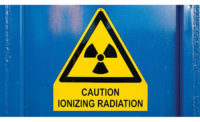 Consultants Tom Rancour and Bradford Russell offered these takeaways in a session at the AIHce:
Consultants Tom Rancour and Bradford Russell offered these takeaways in a session at the AIHce:
● Some companies implement and dedicate time to management systems, but the guiding principle, the safety and health policy, is buried in some labor manual. Without a “map,” management systems develop “escapes” or leaks in risk management compliance because the vision and the followup protocols are buried.
● Is your management system as good as you think it is?
● Everyone in a business has a management system for safety and health, if the hazards warrant it. It might be called the safety program or some other name, but it is a management system.
● You must periodically update your senior people on your management system audit findings, your strengths and weaknesses, and explain how leadership can help close the gaps.
● Among the essentials of management systems: strong leadership that actively demonstrates its support for the system; total employee engagement; hazard risk analysis and robust controls; unwavering accountability on the part of everyone responsible; staffing up with strong EHS “influencers;” rules and procedures; learning systems; knowing how to test for competencies; self-inspections and third-party inspections; thorough, not cursory, incident investigations; open communications, trust, and the ability for anyone to speak up about issues and concerns; leadership teams that conduct annual operations reviews; use of employee focus groups; one on one conversations with employees; interviewing employees and more employees; documentation that is user friendly and can be accessed and used; having the right people in place.
● The safety and health policy should be highly visible throughout the worlplace. Pin it on the front door.
● Conduct mental job hazard analyses and self-check before beginning a job.
● Conduct job hazard analyses for the 80 percent of jobs done consistently, and pre-job briefings for the 20 percent that are not.Safety and health management systems cannot be bolted on to business systems. They cannot exist separately. They must be part of the business process and aligned with business goals. You don’t want to set your safety and health goals in January when the business goals were set back in August.
● Management systems are not about guarantees. They do not guarantee compliance. Management systems give you an array of risk management tools (for non-financial safety and health risks to the organization).
● By all means stay away from a “check the box” mindset for management systems. This is not at all a pencil whipping exercise. Define for yourself and your company what constitutes a quality management system and go after it.




